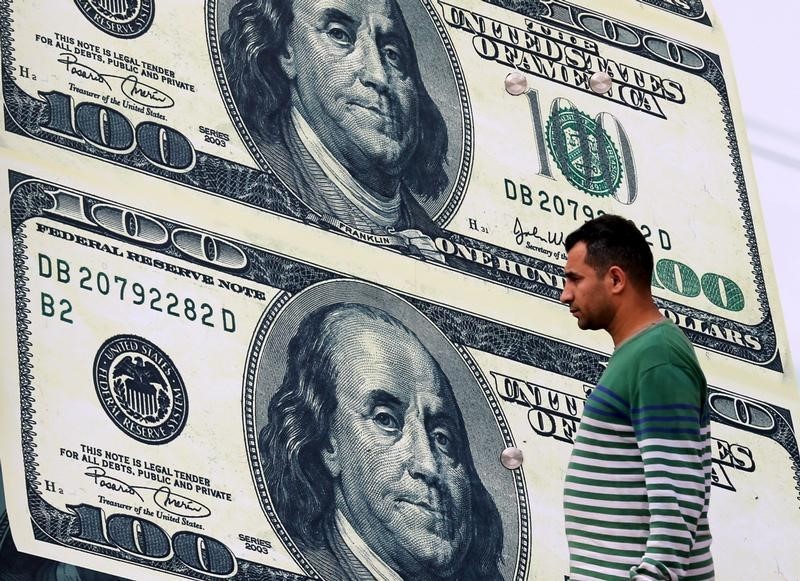By Peter Nurse
Investing.com - The dollar traded higher in early European trading Tuesday, with the Federal Reserve seen as taking a more liberal stance to higher bond yields than its peers.
At 3:55 AM ET (0755 GMT), the Dollar Index, which tracks the greenback against a basket of six other currencies, was up 0.3% at 91.290, hitting a three-week high.
EUR/USD fell 0.3% to 1.2010, GBP/USD fell 0.3% to 1.3885, while USD/JPY was up 0.1% at 106.84.
The risk-sensitive AUD/USD fell 0.3% to 0.7750, after the Reserve Bank of Australia re-committed to keeping interest rates at historic lows. NZD/USD dropped 0.5% to 0.7224, while USD/CAD rose 0.3% to 1.2684.
Currency markets have recently been taking their cues from the global bond market, and while Treasury yields have stabilized the dollar has pushed higher on expectations that the Fed will show greater tolerance of higher bond yields than other central banks.
Fed Chairman Jerome Powell has recently tried to tone down expectations of early tightening, saying the central bank would look through any near-term inflation spike. He will speak again at the end of the week.
Additionally, Richmond Fed President Thomas Barkin played down recent Treasury market volatility, in remarks that reinforce the message that the U.S. central bank is not yet troubled by the increase in yields.
However, the European Central Bank has taken a different stance, with top ECB officials expressing concern about the recent rises in bond yields.
President Christine Lagarde said the central bank will prevent a premature increase in borrowing costs for firms and households, while François Villeroy de Galhau, Governor of the Bank of France, said some of the recent rises in bond yields were unwarranted.
The euro also suffered Tuesday from weak German retail sales as the Covid-19 lockdown and the withdrawal of a temporary cut in sales tax hit consumer spending in Europe's largest economy.
Retail sales fell 4.5% on the month in real terms after an upwardly revised decline of 9.1% in December.
“Yet, as long as the re-opening of economies remains on track from 2Q – which we still believe to be the case – volatility should give way to a resumption of the dollar bear trend later this year,” said analysts at ING, in a research note.
“Despite ECB threats to cut rates, we still expect EUR/$ to be pressing 1.25 this summer and possibly break above it amidst broad global growth into year-end.”
